Developing play skills is an essential part of childhood. Through play, typically-developing children acquire the skills necessary to communicate with others, express and understand emotions, physically manipulate a variety of items of all sizes, build strength and endurance, and gain the cognitive skills to understand their world. As children mature, their play skills move through specific stages: solitary play, parallel play, symbolic play, and cooperative play.

The first stage of play is solitary play, which typically lasts from just a few months old until about 18 months old. During this stage, children tend to play alone or possibly with adults, with limited interest in interacting with same-age peers. They generally prefer basic cause-and-effect toys that meet their sensory needs, including those that spin, light up, and make sounds, and toys they can easily mouth. They tend to enjoy watching toys fall to the ground when dumping containers with several pieces (e.g. blocks, small dolls, and toy cars). Babies and toddlers also enjoy playing games like peek-a-boo and tickles because of the cause-and-effect nature. Toys that are appropriate for this stage would include simple musical instruments (like drums, shakers, and tambourines),
Whoozit Cosmic Bead Maze, and activity boxes.

The next stage of play is parallel play, during which children are able to play alongside one another and may even be playing with the same toy or game, but show minimal ability to appropriately interact with one another. This generally occurs between 18 to 36 months old. At this time, basic reciprocal play skills may develop as well. This is when children begin to understand that simple play, such as passing a ball or car back and forth, can be enjoyed by multiple people simultaneously. This tends to increase children’s ability to communicate and engage physically with their peers. Toys that are appropriate for this stage would include shape sorters,
Create and Play Pattern Blocks, wooden puzzles, and pull toys.

Symbolic play involves the use of inanimate objects to represent real-life activities, such as pretending that a basket of balls is really a basket of apples picked off imaginary trees or caring for a stuffed plush dog by giving it imaginary water and food. This stage of play occurs around three to four years old. Basic symbolic concepts increase the children's ability to understand and communicate about the world around them. Toys that are appropriate for this stage include
Baby Stella and her accessories, stuffed animals, doctor kits, and dress-up clothes.

Cooperative Play is the most advanced stage of play. This is when children develop complex storylines to guide their play, occurring beyond four years of age. Perhaps a group of two to three children are taking a family vacation. They pack their clothes, pretend to drive to the location, put on dress-up clothes appropriate for the location, and pretend to engage in appropriate activities given the scenario. Other ideas may include playing house with baby dolls, building a fort of blocks filled with action figures, or going grocery shopping and cooking meals in a play kitchen. Children at this stage are also able to play basic board games as they learn the rules of sharing and turn-taking. Toys that are appropriate for this stage include play food and dishes,
Groovy Girls and accessories, and action figures.
Children of all ages use play to understand and imitate the world around them. My 4-year old daughter enjoys ‘cooking’ in her play kitchen because she sees me cooking in our real kitchen, while my 2-year old son can often be found wearing my daughter’s dress-up clothes, holding a toy car, chasing the dogs. Play allows children to explore, discover, and create freely within a natural learning environment. Providing children with a variety of developmentally-appropriate toys allows them to use their imaginations limitlessly.
Dr. Carrie Wells is a college instructor, blogger, wife, and work-at-home mother to two young children, Lydia (age 4) and Bryce (age 2). She holds a Doctorate in Education and blogs as
Huppie Mama, writing about child development, healthy eating, crafts, natural living, and beauty. Connect with her on
Twitter and
Facebook.
 The first stage of play is solitary play, which typically lasts from just a few months old until about 18 months old. During this stage, children tend to play alone or possibly with adults, with limited interest in interacting with same-age peers. They generally prefer basic cause-and-effect toys that meet their sensory needs, including those that spin, light up, and make sounds, and toys they can easily mouth. They tend to enjoy watching toys fall to the ground when dumping containers with several pieces (e.g. blocks, small dolls, and toy cars). Babies and toddlers also enjoy playing games like peek-a-boo and tickles because of the cause-and-effect nature. Toys that are appropriate for this stage would include simple musical instruments (like drums, shakers, and tambourines), Whoozit Cosmic Bead Maze, and activity boxes.
The first stage of play is solitary play, which typically lasts from just a few months old until about 18 months old. During this stage, children tend to play alone or possibly with adults, with limited interest in interacting with same-age peers. They generally prefer basic cause-and-effect toys that meet their sensory needs, including those that spin, light up, and make sounds, and toys they can easily mouth. They tend to enjoy watching toys fall to the ground when dumping containers with several pieces (e.g. blocks, small dolls, and toy cars). Babies and toddlers also enjoy playing games like peek-a-boo and tickles because of the cause-and-effect nature. Toys that are appropriate for this stage would include simple musical instruments (like drums, shakers, and tambourines), Whoozit Cosmic Bead Maze, and activity boxes.
 The next stage of play is parallel play, during which children are able to play alongside one another and may even be playing with the same toy or game, but show minimal ability to appropriately interact with one another. This generally occurs between 18 to 36 months old. At this time, basic reciprocal play skills may develop as well. This is when children begin to understand that simple play, such as passing a ball or car back and forth, can be enjoyed by multiple people simultaneously. This tends to increase children’s ability to communicate and engage physically with their peers. Toys that are appropriate for this stage would include shape sorters, Create and Play Pattern Blocks, wooden puzzles, and pull toys.
The next stage of play is parallel play, during which children are able to play alongside one another and may even be playing with the same toy or game, but show minimal ability to appropriately interact with one another. This generally occurs between 18 to 36 months old. At this time, basic reciprocal play skills may develop as well. This is when children begin to understand that simple play, such as passing a ball or car back and forth, can be enjoyed by multiple people simultaneously. This tends to increase children’s ability to communicate and engage physically with their peers. Toys that are appropriate for this stage would include shape sorters, Create and Play Pattern Blocks, wooden puzzles, and pull toys.
 Symbolic play involves the use of inanimate objects to represent real-life activities, such as pretending that a basket of balls is really a basket of apples picked off imaginary trees or caring for a stuffed plush dog by giving it imaginary water and food. This stage of play occurs around three to four years old. Basic symbolic concepts increase the children's ability to understand and communicate about the world around them. Toys that are appropriate for this stage include Baby Stella and her accessories, stuffed animals, doctor kits, and dress-up clothes.
Symbolic play involves the use of inanimate objects to represent real-life activities, such as pretending that a basket of balls is really a basket of apples picked off imaginary trees or caring for a stuffed plush dog by giving it imaginary water and food. This stage of play occurs around three to four years old. Basic symbolic concepts increase the children's ability to understand and communicate about the world around them. Toys that are appropriate for this stage include Baby Stella and her accessories, stuffed animals, doctor kits, and dress-up clothes.
 Cooperative Play is the most advanced stage of play. This is when children develop complex storylines to guide their play, occurring beyond four years of age. Perhaps a group of two to three children are taking a family vacation. They pack their clothes, pretend to drive to the location, put on dress-up clothes appropriate for the location, and pretend to engage in appropriate activities given the scenario. Other ideas may include playing house with baby dolls, building a fort of blocks filled with action figures, or going grocery shopping and cooking meals in a play kitchen. Children at this stage are also able to play basic board games as they learn the rules of sharing and turn-taking. Toys that are appropriate for this stage include play food and dishes, Groovy Girls and accessories, and action figures.
Children of all ages use play to understand and imitate the world around them. My 4-year old daughter enjoys ‘cooking’ in her play kitchen because she sees me cooking in our real kitchen, while my 2-year old son can often be found wearing my daughter’s dress-up clothes, holding a toy car, chasing the dogs. Play allows children to explore, discover, and create freely within a natural learning environment. Providing children with a variety of developmentally-appropriate toys allows them to use their imaginations limitlessly.
Dr. Carrie Wells is a college instructor, blogger, wife, and work-at-home mother to two young children, Lydia (age 4) and Bryce (age 2). She holds a Doctorate in Education and blogs as Huppie Mama, writing about child development, healthy eating, crafts, natural living, and beauty. Connect with her on Twitter and Facebook.
Cooperative Play is the most advanced stage of play. This is when children develop complex storylines to guide their play, occurring beyond four years of age. Perhaps a group of two to three children are taking a family vacation. They pack their clothes, pretend to drive to the location, put on dress-up clothes appropriate for the location, and pretend to engage in appropriate activities given the scenario. Other ideas may include playing house with baby dolls, building a fort of blocks filled with action figures, or going grocery shopping and cooking meals in a play kitchen. Children at this stage are also able to play basic board games as they learn the rules of sharing and turn-taking. Toys that are appropriate for this stage include play food and dishes, Groovy Girls and accessories, and action figures.
Children of all ages use play to understand and imitate the world around them. My 4-year old daughter enjoys ‘cooking’ in her play kitchen because she sees me cooking in our real kitchen, while my 2-year old son can often be found wearing my daughter’s dress-up clothes, holding a toy car, chasing the dogs. Play allows children to explore, discover, and create freely within a natural learning environment. Providing children with a variety of developmentally-appropriate toys allows them to use their imaginations limitlessly.
Dr. Carrie Wells is a college instructor, blogger, wife, and work-at-home mother to two young children, Lydia (age 4) and Bryce (age 2). She holds a Doctorate in Education and blogs as Huppie Mama, writing about child development, healthy eating, crafts, natural living, and beauty. Connect with her on Twitter and Facebook.
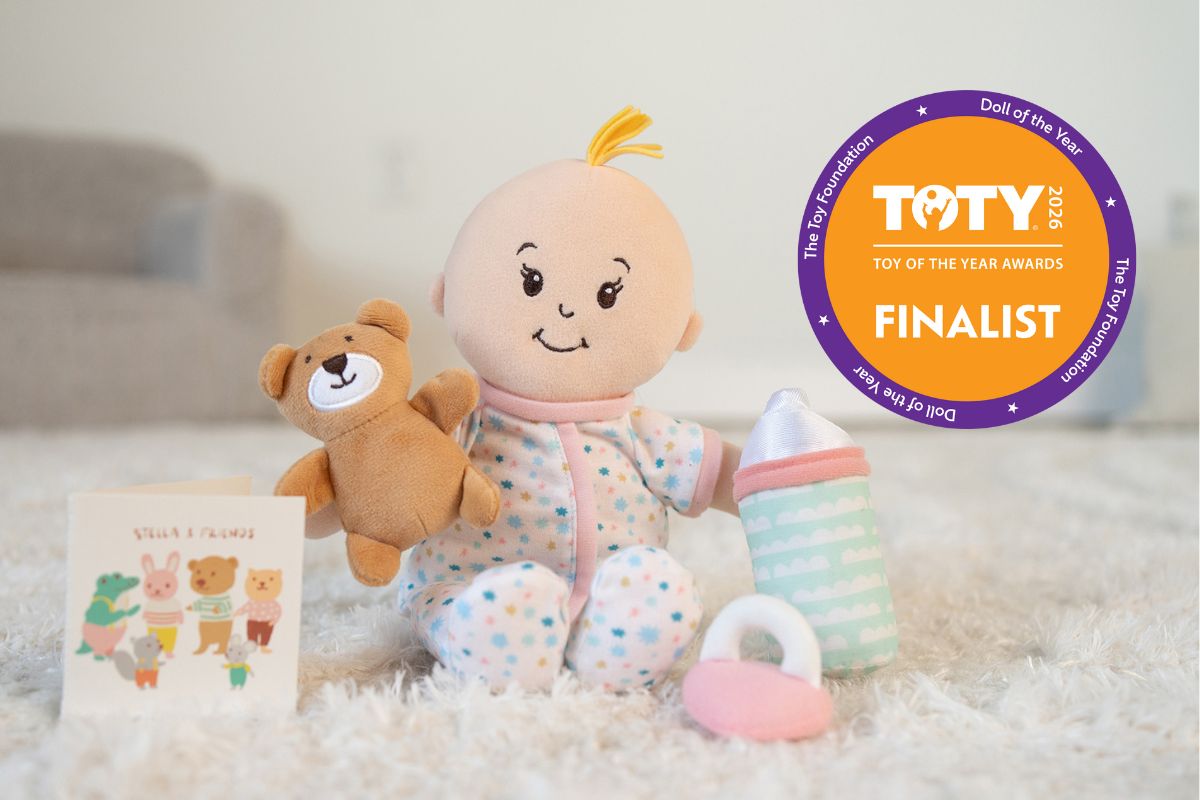
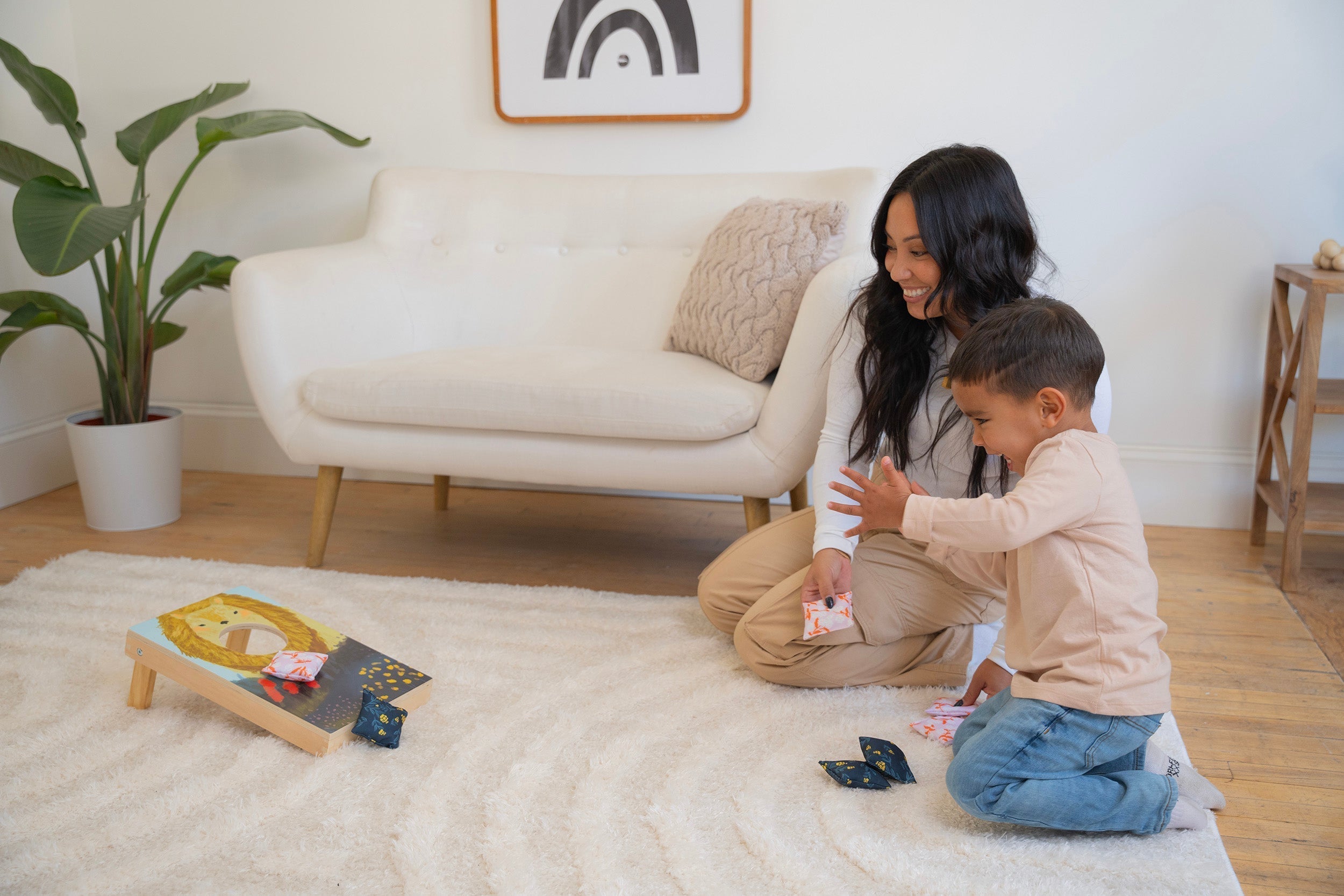
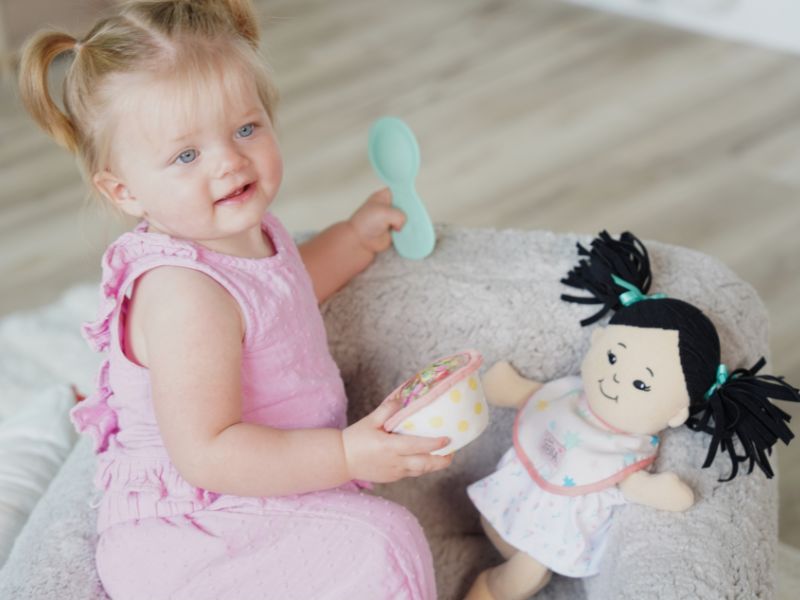


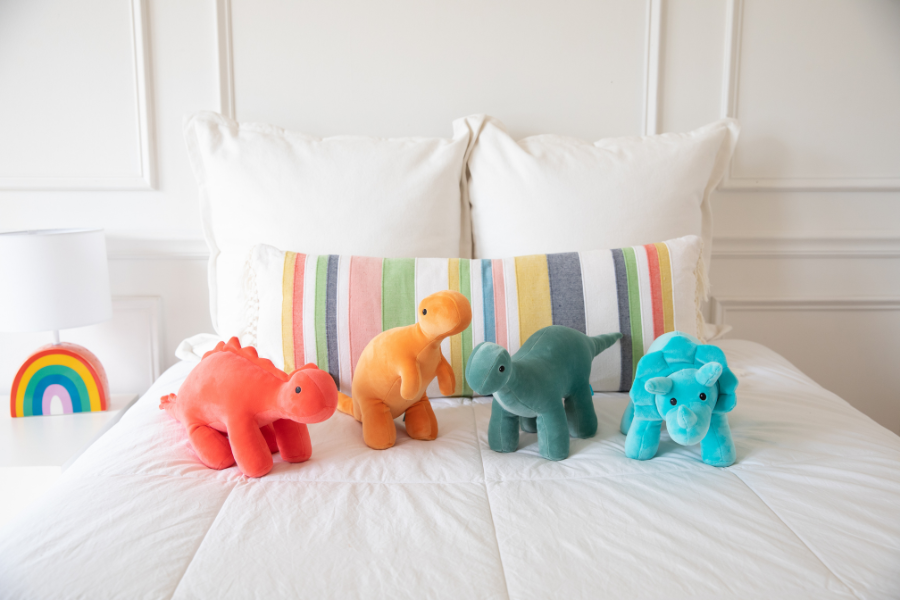

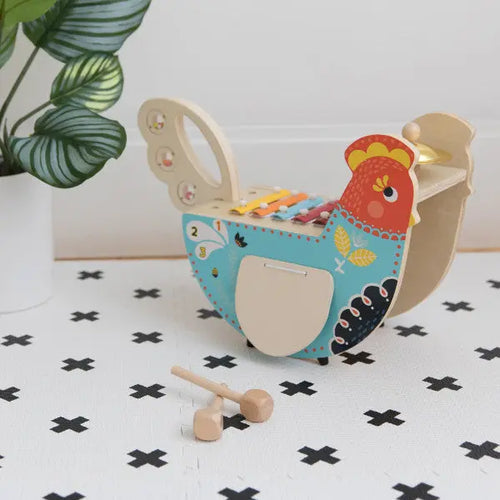
Retailer of the Month: ABC & Toy Zone
Family Road Trip Take‐Alongs
1 comment
[…] This article originally appeared on the Manhattan Toy Blog. […]